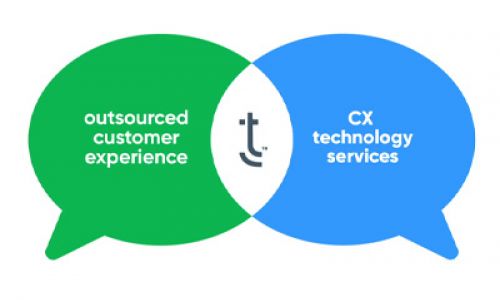Perhaps you’ve heard of the term “omnichannel experience.” Many leaders have added this buzzy term to their business vernacular, but few have actually applied it to the customer experience. Market forces and customer expectations, however, are forcing business leaders to put their words into action and provide a true omnichannel experience. As these changes get underway, we’ll look at the ways in which omnichannel trends are transforming customer service and what to expect next.
Which channels should be included in an omnichannel experience? The answer should be any channel through which your customer wants to interact with you. Instead of scrambling to provide every means of contact possible, savvy organizations focus on the channels that their customers use most often to contact their business. Consider whether customers are asking for an additional means of communication, as well as the demographics of your customer base and the mediums they could use to connect to you. If you have a mobile app, you’ll want chat and SMS. If the customer traffic to your website is high, then proactive chat and journey management can reduce phone calls to your care organizations. Think about which interaction types are simple enough to include and find ways to put them in digital channels.
Context, context, context
Some channels are better suited for certain customer issues than others. Context matters. Explaining the details of a billing error over social media versus a phone call, for example, can be incredibly tedious. By the same token, customers may prefer using social media for a quick interaction.
Case in point: I was on a Southwest Airlines flight in which I paid for wi-fi but I didn’t receive it, even though the company accepted my payment. Naturally, I was annoyed and wanted to issue a complaint. It wasn’t about the money; I wanted to let Southwest know that I was unsatisfied with its service. The flight attendants wouldn’t have been able to help me so I waited until we landed.
But rather than go through the trouble of calling the airline’s customer service number, I tweeted a private message to Southwest. I gave them my name, flight number, and explained that I didn’t receive the wi-fi connection that I had paid for. Before I reached the gate, I received a refund and an apology from the company.
An effective omnichannel strategy means understanding the reasons why customers want to reach your company and allowing them to use their preferred channel. Whereas customers were once directed to a company’s hotline or email, more companies are supplementing those channels with other outlets like social media.
Be proactive
A true omnichannel experience also means allowing customers to jump around channels without repeating their problem or question every time. Proactively offering a chat window is one example of providing assistance without disrupting the user experience. Co-browsing via the chat window allows the associate to view the same screen as the customer and review the customer’s journey to answer questions more effectively. Simply put, data insights into the customer journey is a critical part of enabling a successful digital interaction.
Companies are also increasingly turning to real-time speech analytics to guide associates through conversations with customers and improve customer satisfaction. The technology captures and analyzes phone conversations as they occur and using linguistic analytics combined with a decisioning engine, identifies next-best actions for the associate.
In addition to improving the customer experience, don’t forget to inform customers of these improvements. If the new channel or medium isn’t properly introduced to customers, they're not going to use it. It's important to have a rollout strategy for showcasing the value of the new features and providing the proper training for employees. Hiring an experienced partner to manage the rollout strategy and training can save a significant amount of time and money. An experienced partner can also share best practices that they’ve gleaned across industries to further enhance the implementation process.
A bigger role for IT
IT plays an integral role in the evolution of a company’s digital strategy and its digital experience. As such, the efforts of an IT organization are increasingly shifting toward the integration of tools and platforms to streamline information. In order to provide a comprehensive and seamless customer experience, companies must streamline their data and tools on the back end. And as more cloud providers come to the forefront, the ability of IT teams to integrate different technologies into a single user experience is going to be critical to the success of any brand.
What does this mean for the rest of the organization? Leaders of other departments can aid in this process by resisting the temptation of investing in standalone software and executive leaders can provide top-down support for omnichannel initiatives.
The omnichannel customer experience is about transcending silos and giving customers what they want, when they want it, wherever they are. For customer service sectors, this means realigning processes and operations to remove obstacles and provide seamless service across channels. Few companies are there yet, but expect to see more investments in connecting customer journeys and helping associates to provide support in real-time, across any channel.
Like this post? Subscribe to our customer experience blog.
Also, check out the most recent issue of our monthly customer experience eNewsletter, Dialogue.
Omnichannel Service: Are We There Yet?


June 7, 2017
by Sandy Mandair,
Head of Product Management
Digital Transformation, Omnichannel Platform
Head of Product Management
Digital Transformation, Omnichannel Platform





